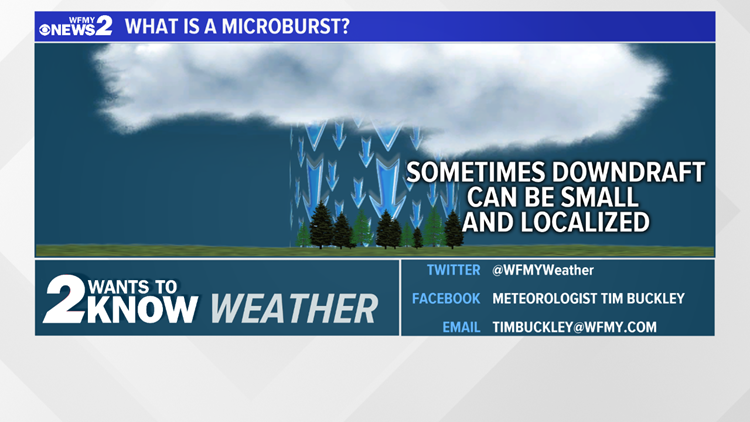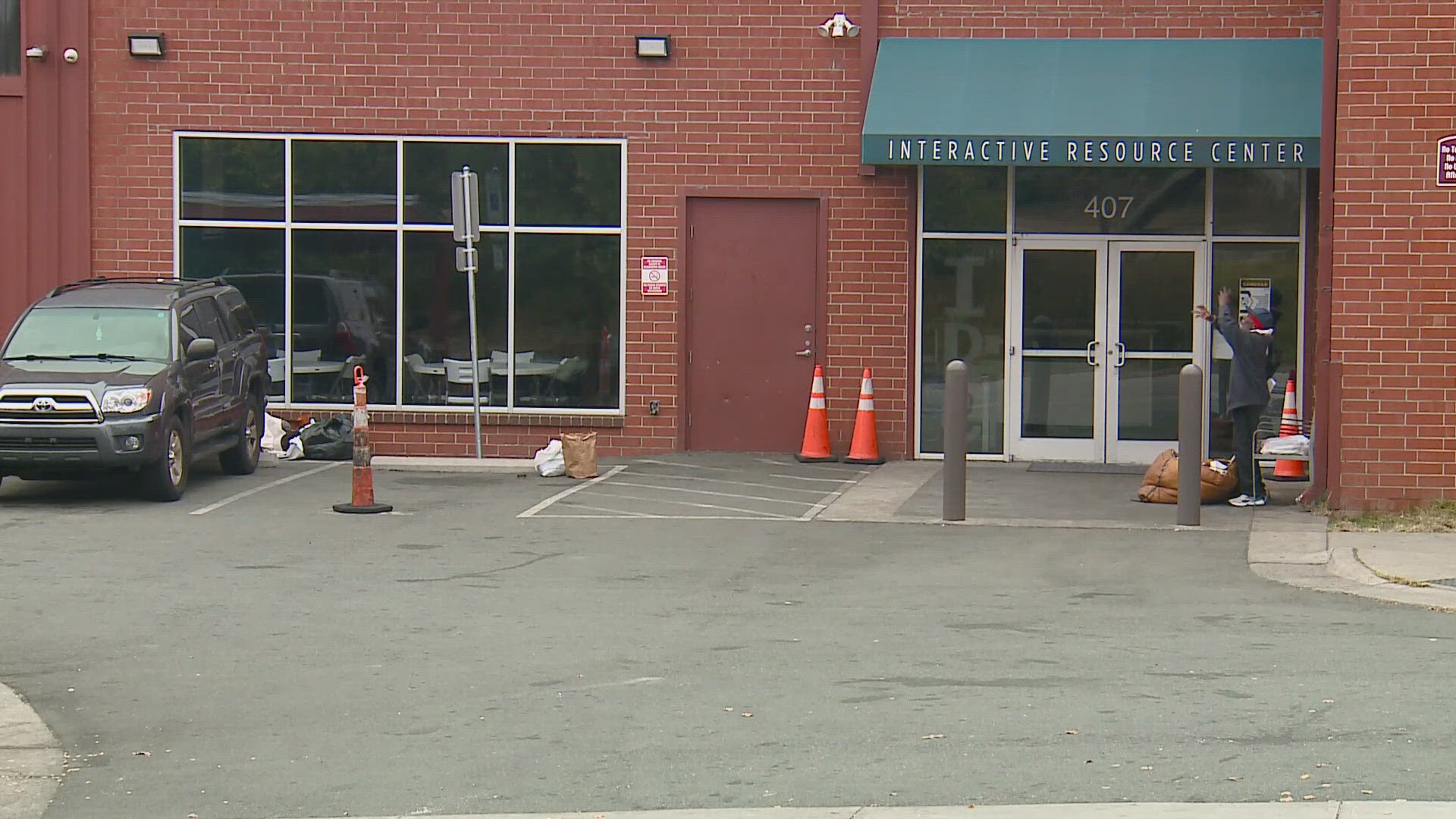GREENSBORO, NC -- Tornadoes get all the headlines, but something called a "microburst" can be just as dangerous, and happens more often.
These storms bring torrential rain, severe wind, and often strike quickly. Just this week, a microburst is being blamed for a roof collapse and subsequent fire at a Safeway in Phoenix: STORY
But what exactly is a microburst? It isn't a special kind of storm, it's something that can happen within a thunderstorm. To understand a microburst, we need to understand how a thunderstorm is formed in the first place.

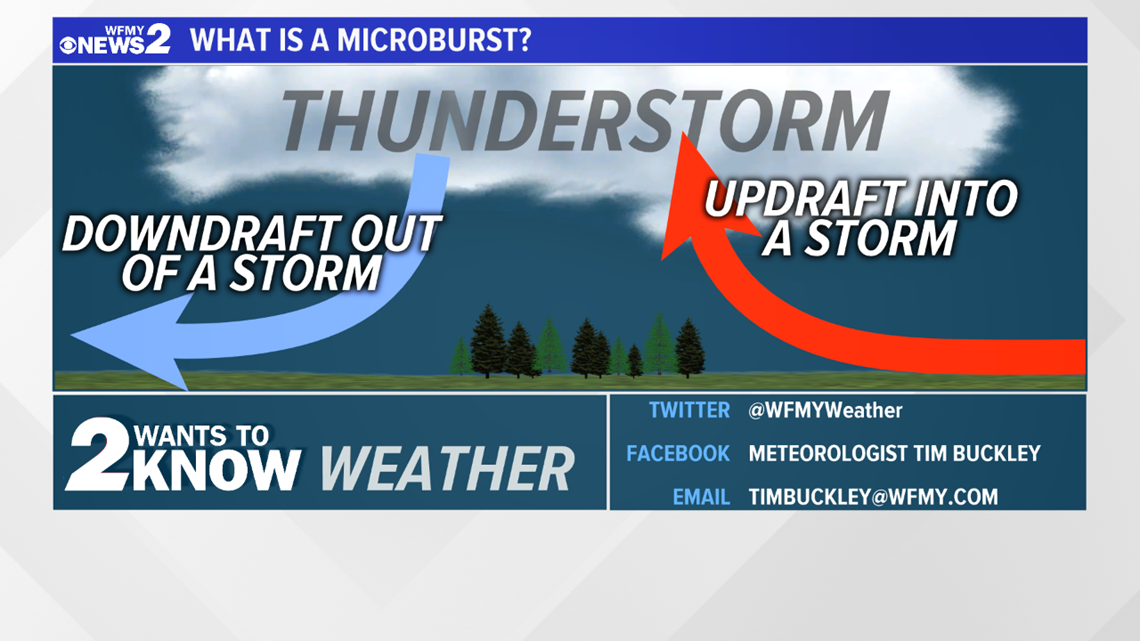
Thunderstorms form when air rapidly rises into the atmosphere. This cools the air, creating condensation, creating clouds, downpours, and eventually a thunderstorm if it's strong enough. This current of rising air is called an "updraft". What goes up, must come down, and thunderstorms also have "downdrafts", which are columns of rapidly sinking air.
Most times, these downdrafts aren't particularly strong, often just a cool gust of wind rushing out of a thunderstorm. Sometimes, they can incredibly strong and localized. These small, localized bursts of wind are where microbursts can happen.

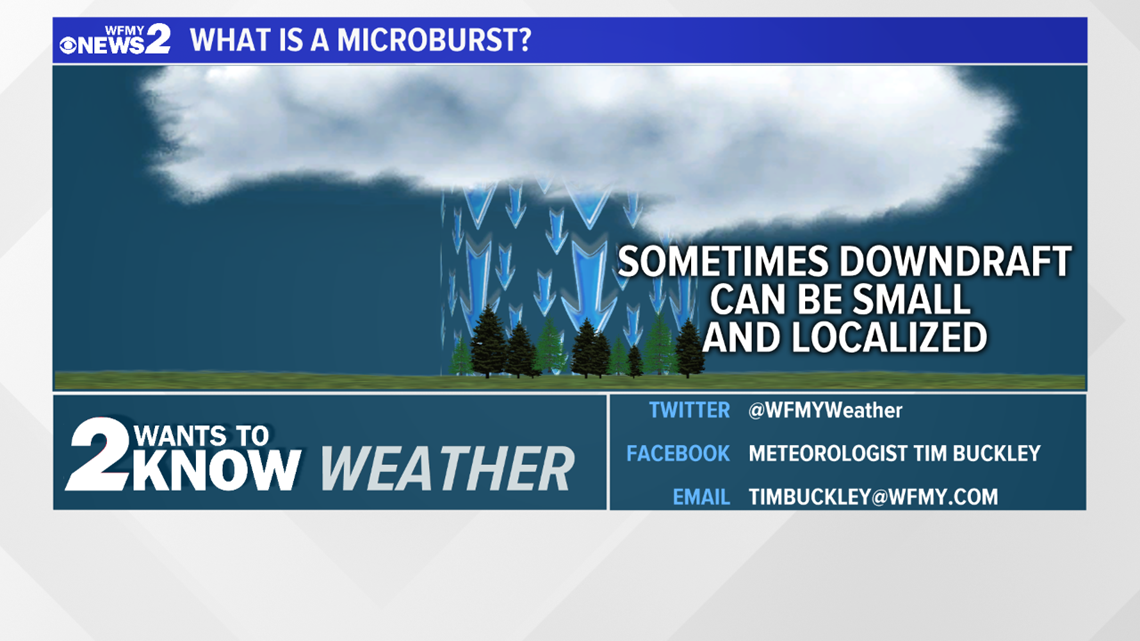
As the air rushes out of storm, it spreads out in all directions as it hits the ground. These damaging winds can down trees, power lines, etc. in all directions if the winds are strong enough. In particularly severe thunderstorms, winds can reach up to 150 mph. This is most common when very high winds are already in the atmosphere, then the downdraft can move this air down to the surface.


So what is a microburst? Microburst is the name given to a particularly strong downdraft, that occurs over a small area, 2.5 miles or less. These severe winds can produce damage just as strong as some tornadoes. Instead of rotating severe winds like a tornado, the winds in a microburst are moving in a straight line. The term "straight line winds" is often used to describe microburst damage.

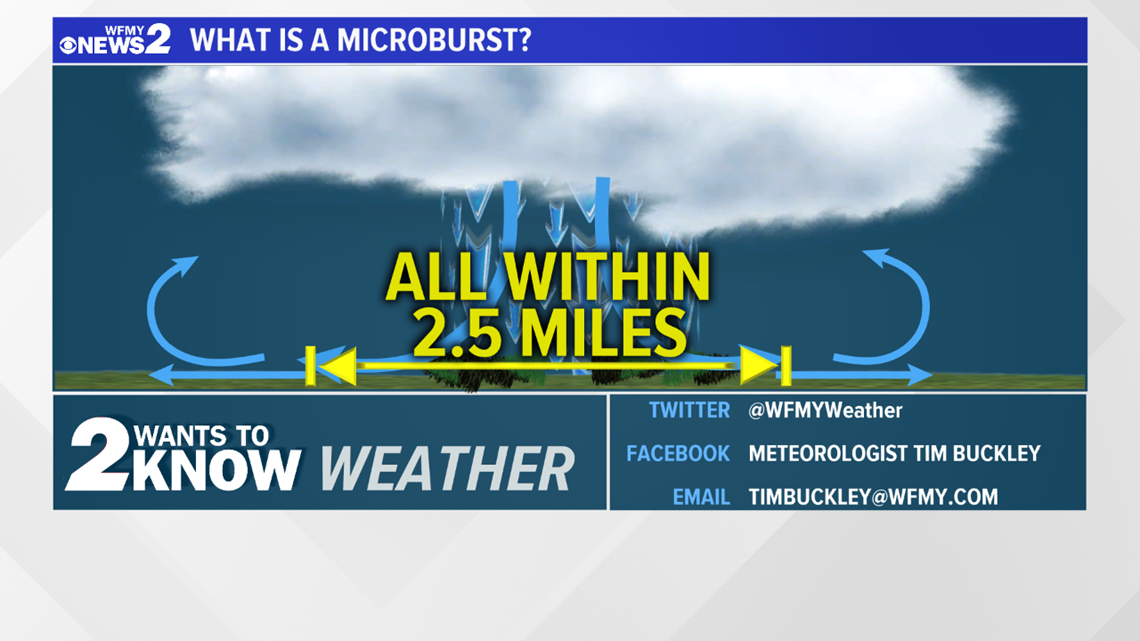
Earlier this week, a microburst hit Phoenix. It brought incredibly heavy rain to a Safeway grocery store, and likely some severe wind as well. The weight of this water brought a roof collapse, triggering a chain reaction that resulted in a devastating fire.
For more weather questions, feel free to reach out to Chief Meteorologist Tim Buckley on Twitter, Facebook, or by e-mailing TimBuckley@wfmy.com

